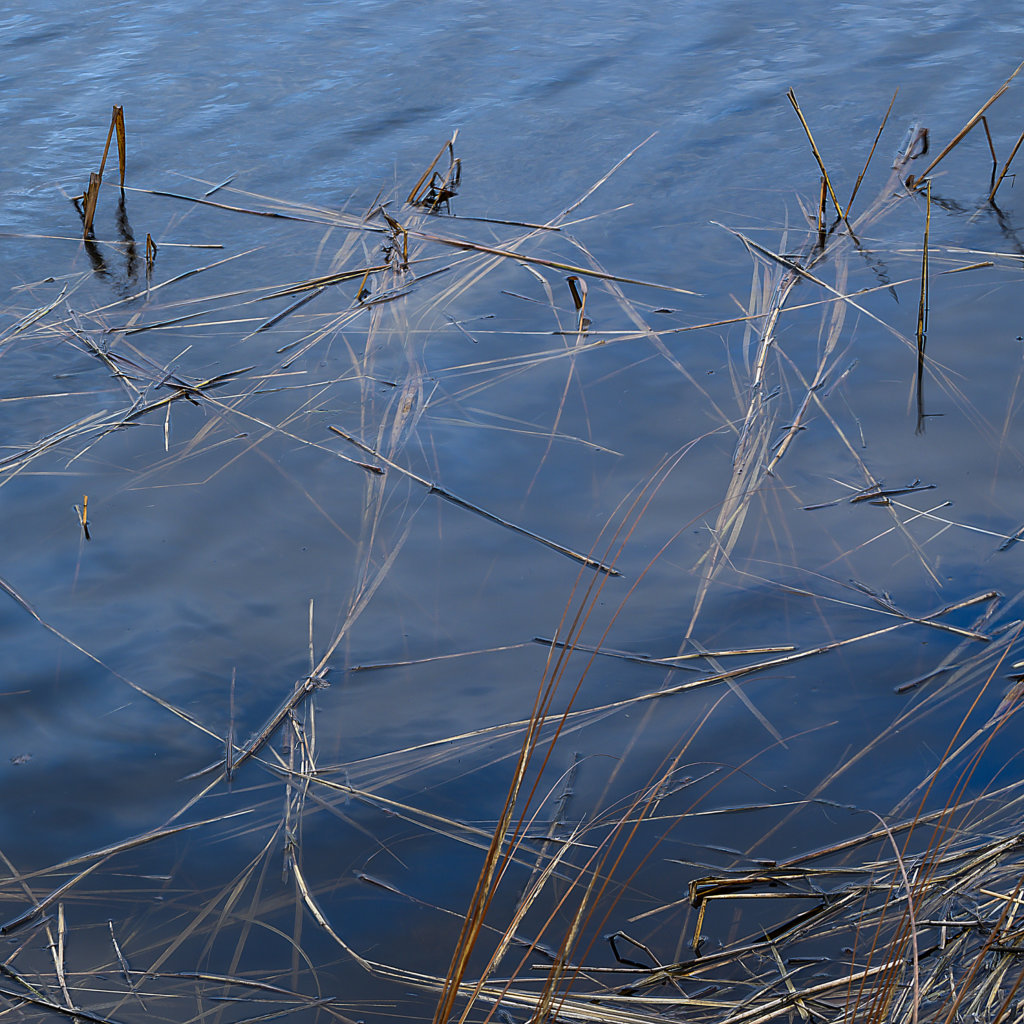Picture Rhode Island’s coast in the year 2100. Even if global greenhouse gas emissions were slowed or halted, sea level rise and warming would continue. Our communities will have to adapt.
The question is, how?


Linda Megathlin
2100
Seas rising was the mantra of our youth.
Now doddering, tottering, we look back.
Amidst life’s daily ebb and flow, we heard the lapping of seas rising,
But see it we did not.
Salt marsh sparrow hatchlings drowning, tupelo trees dying,
See it we did not.
Moon tides seeping into farmers’ fields, spring rainwater collecting in stone cellars,
See it we did not.
Kayakers paddling down streets, storm-driven yachts twisting from their cradles,
Still, we did not see it.
It took washed out roads, sodden houses, food shortages and mold to finally wake us from our slumber.
But, even then, the sound of generators, bulldozers and alarms was not enough to keep us from returning, raising houses, dams and roads.
These days, we finally know the desperate folly of our ways.
The wise have fled. Yet, still we stay.
In houses on stilts perched on a new water’s edge.
Lulled once more by the lapping of seas rising,
Knowing that the tide of life runs in, but also out
Immune to fears, we are just banking on a few more years.
Linda Megathlin is a photographer, mixed media artist and sometimes poet who lives and works in Warren, RI.

Elizabeth Rush
The Future as Seen from Kettle Point
Picture yourself sitting on a large beach blanket, sipping a Del’s lemonade. Your son stands in the tidal shoals hunting for hermit crabs. Meanwhile, your partner lazes next to you, taking advantage of their paid leave to plow through that old classic: Harry Potter and the Sorcerer’s Stone. But the road at your back is not Bay Street and your vehicle does not carry a Barrington Town Beach parking permit, nor have you made the trek from Providence down to South County to bask in the sun. No, you walked here from the west side where you work as a nurse at Women and Infants Hospital.
The year is 2100 and you are on land that once belonged to National Grid, Provport, and the Schnitzer Northeast Recycling Center. Land that, as the tides rose higher and storms got stronger, more frequently found itself underwater. Land that was briefly classified as contaminated before it was cleaned up thanks to the billions in reparations the fossil fuel industry was ordered to pay for the game-changing pollution their companies caused. Land that through one of the most innovative and forward-looking public policy initiatives ever enacted in the United States, has become part of a 90,000-mile-long park that now wraps the country’s evolving coastline.
The “Nationalize the Seashore” program began when the bottom fell out of the coastal real estate market back in 2030. For years declining property values linked to the uptick in climate change induced flooding had made the market soft. Then thanks to yet another record-breaking hurricane season, this time with its over $300 billion dollars in damages, the market turned downright mushy. The National Flood Insurance Program, reeling beneath the weight of so many storms, decided that that time had come, once and for all, to allow residents making claims to take their payments and relocate to higher ground. The decision about whether or not to build back their homes on flood-prone land was voluntary, though as one storm turned into two, and two storms turned into three, more folks made the choice to permanently move away from risk.
Some called it managed retreat other called it collective relocation. Either way, so began “The Great Transition” where what were once some of the most vulnerable properties in the country became a public commons, with rights and access held by all.
As surreal as this vision of the future might seem consider the alternative, one where our local, state, and federal governments refuse to acknowledge the sweeping changes already underway. Retreat from the lowest lying land still takes place, but in an entirely unmanaged manner. Because there is no funding available to help municipalities transition formally industrial parcels over to public space, the old recycling plant leaches chemicals into Narragansett Bay, as does National Grid’s facility and Provport, thanks to the aluminum oxide and petroleum that once found its way into and out of the Ocean State down along Terminal Road. The quahogs that had returned all disappear, and the bay, which so many of us depend upon, becomes, instead of a shared resource, yet another example of how dangerous it is to think of humans and nature as separate in the first place.
Elizabeth Rush is an author and journalist. Her latest book, Rising: Dispatches from the New American Shore, was a finalist for the Pulitzer Prize in General Nonfiction. She currently teaches in Brown University’s English Department, and is working on a book on motherhood and Antarctica’s glaciers.

Curt Spalding
Several times a week Callie and I turn the corner onto Narragansett Boulevard and head to a park on Stillhouse Cove. The smells from the marsh excite her dog brain, like standing on a mountain ready to ski into a foot of powder excites mine.
Approaching the Cove I see an old man on a bench. You know your children from a distance. Is that Henry?
“Hi, Dad”.
“What!! Have I collapsed with a heart attack? Is this my death dream?”
“No Dad you’re not dead. It’s time travel. I came back from 2100. It cost a bit but I knew you would want to know how the future turned out. You got so anxious about climate change as we grew older. By coming back, I thought I could help you with that.”
“Well, what happened to Narragansett Bay? I spent my best years saving it.”
“The Bay is much warmer and much higher and full of Redfish and Spotted Trout instead of Flounder and Tautog. The fishing is incredible. People migrated away from the Bay. Thousands of acres of stream, rivers, and marshes re-emerged after the people left.”
“Why did everyone decide to leave the shore?”
“You know that book you read back in 2012, ‘Rising: Dispatches from the American Shore’ by Elizabeth Rush?” She foreshadowed what happened in her chapter about Oakwood Beach on Staten Island after Hurricane Sandy. That whole community decided to recruit a buyout. After several hurricanes hit the Bay, neighborhoods all around the Bay wanted to leave. The water kept rising and the Bay reclaimed the shore. Our technology helped. Super sensor networks and advanced green engineering improved ecological restoration work and the shore was transformed “
“Where did everyone go?”
“Oh, Dad, the experience changed everything. Notions that we can control nature with massive engineering structures are now absurd. The pandemics and accelerating climate change were hard to deal with, but we now understand what you were talking about when you went on about socio-ecological resilience. Resilience thinking drives how we sustain the economy and communities. Technologies you cannot imagine give us unlimited climate-safe power. With it, we stabilized the climate by extracting carbon and developed an architecture that is continually adaptive by design and use. People wanted to leave what was old and threatened – for what’s new and healthier for themselves and their families.”
“Wow, did dealing with climate change make the world better?”
“Yes, it did. By valuing resilience a new level of personal security and equity defines life around the Bay and everywhere else. Universal health care, sufficient nutrition, and income were all seen as necessary to build the level of resilience necessary to adapt to rapid climate change.”
“It sounds like the Bay is in good shape.”
“That’s right. With most of the houses gone, it is accessible to everyone for fishing, swimming and sailing like the Tribes and Rhode Islanders centuries ago. We know how to sustain the Bay and our communities without degrading the quality of one for the other.”
“Henry, this still feels like a death dream.”
“Dad you are not dead! You have to keep working on building resilience.”
“Ok Henry, I will keep at it”
“Times up Dad. I have to go. The Time Travel Authority gives us just a few minutes so we don’t have time to screw up the future.”
“Will I see you again?”
“Probably not. The waitlist for time travel is over ten years.”
“Your visit is a wonderful gift. I love you Henry.”
“Love you too Dad.”
Curt Spalding teaches in the Institute at Brown for Environment and Society. He previously served as Regional Administrator of the EPA’s New England division. And for eighteen years, he led the Providence-based environmental nonprofit Save The Bay.

Ellen Winsor
My dear friend,
We were in Newport, RI for New Year’s 2100. Strolling through downtown, we watched workers programming robots to build a beautiful 10+ foot high storm-surge wall along the waterfront. The construction workers said winter storms are more extreme, so the wall needs height added to it.
The Point and the Lower Fifth Ward have flooded, and salt water is near the White Horse Tavern and the park at Trinity Church. Gould and Rose Islands, now submerged, no longer buffer the boat anchorages from the weather. The historic wharf buildings apparently were moved years ago. The white beaches were reclaimed by the sea! We drove Newport Bridge via Jamestown’s elevated extension because Potter’s Cove has flooded. It’s amazing, the changes.
Newport is two islands, with Castle Hill separate from the rest. We took a ferry there for dinner, which was a wonderful evening. The fish is from Greenland; New England waters are too warm and acidic to support sea life for food. All this is part of global change. The vast blue ocean absorbed 90% of the carbon from fossil fuel combustion, making “Neptune” hotter and more acidic. The ocean’s water expanded, melting the glaciers. Rainfall and snowfall here are lessened, despite periodic extreme storms.
Newport’s drinking water reservoir at old First Beach flooded during a 500 year storm, so it’s an evolving salt marsh. The reservoir was anticipated at risk and moved. The Mayor said the Wastewater Treatment Plant was abandoned due to the risk of saltwater intrusion and relocated to higher ground. The waiter said 15,000 people live in Newport (down from 24,000 in 2020), in houses mandated to have water cisterns and advanced renewable energy roofs, windows and shingles. Energy is stored in electricity microgrids for emergency needs.
Redwood Library staff showed us old newspapers. Climate change scientists in 2020 revealed North America, and specifically New England, would be most impacted first by flooding and heat! After that, insurance companies – to stay financially solvent – significantly raised NE residential property insurance rates, with the backing of sovereign investment banks around the world. Residential coastal property value appreciation was already in decline at that time, but taxes were not. Homeowners and businesses increasingly departed coastal areas.
Talking about ferries! Charming little ferry-looking-factories, operating autonomously, silently slurp up storm surge toxins from Providence, surges which are bringing industrial by-products back to lower Narragansett Bay.
Over New Years, from our hotel, with the weather iffy, we heard warning sirens. Certain melodic sounds mean heat or air problems, or a storm is pending.
The whole state is different. Warren is now three islands. Portsmouth’s Island Park is essentially underwater. Charlestown, Narragansett and Westerly fear and fight open-ocean erosion. Bristol holds its 4th of July Parade on higher Franklin Street. Why was it that the fossil fuel industry, with billions in profits yearly, received $650 billion dollars in subsidy from US taxpayers every year too? The citizenry has paid trillions in climate change damages, while fossil fuels polluted, impaired health, and damaged the planet for free. Now, the very map of RI has changed.
All my best,
Our Commonwealth
Ellen Winsor is a policy advocate for quantum computing, a research fellow at the U.S. Naval War College in Newport, and a former Jamestown town councilor.
Share your Vision of the Coast in 2100
The year is 2100. Here’s how Rhode Island’s Coastal Resources Management Council predicts conditions along the coast will change:
- Sea level will rise by 6 to 10 feet, flooding about 85 miles of road and 3,000 homes at high tide. Higher sea level will force marshes to migrate inland, where possible. And salt water intrusion will push the water table up, potentially damaging roads and septic systems.
- Tidal flooding will close roads and block storm drains an estimated 300 days each year. It will also place infrastructure facilities, including wastewater treatment plants and drinking water utilities at risk.
- Storms will be more intense. We’ll get more rain each year, in more intense bursts.
- Air and water temperatures will increase, becoming more similar to current conditions in mid-Atlantic states like Virginia. Heat waves will be more intense, especially in urban centers. And the composition of our ecosystems will change, as species shift northward.
- Coastal erosion will accelerate, removing more sand from our beaches, and rock from our cliffs.
Take us to the year 2100, and tell a story about life in Rhode Island. Setting aside political and financial constraints, picture your best-case scenario for how the coast has changed. The purpose of this request is to spark a conversation about how we want our coast to look in the century ahead.
Some questions to consider:
- What will you see when you walk along the shoreline?
- What will coastal cities look, sound, and feel like? How about beaches and marshes?
- Where will we live?
- Where will our food, water, and power come from? And where will our waste go?
- What role will technology play in our lives and our cities?
There are no rules about style or structure. Your response could take the form of a sci-fi story, a poem, an op-ed, an image, a musical composition, or whatever feels right. Submit your response here, or email srudin@thepublicsradio.org
The Public’s Radio takes pride in serving you by providing well-researched, thought provoking journalism you can trust.

Share Our Coronavirus Coverage
The Public’s Radio is made possible by people just like you. Thank you for your support.